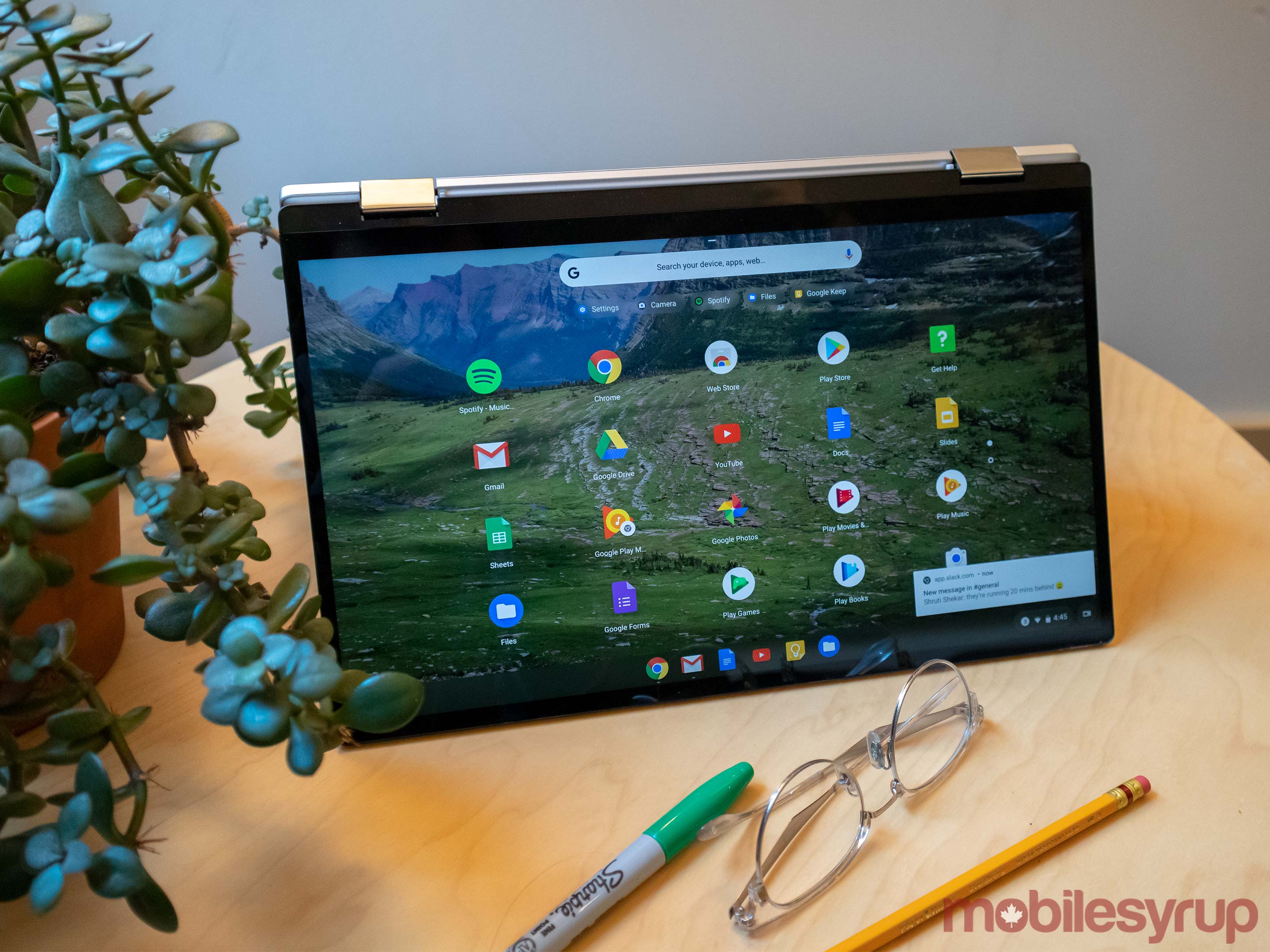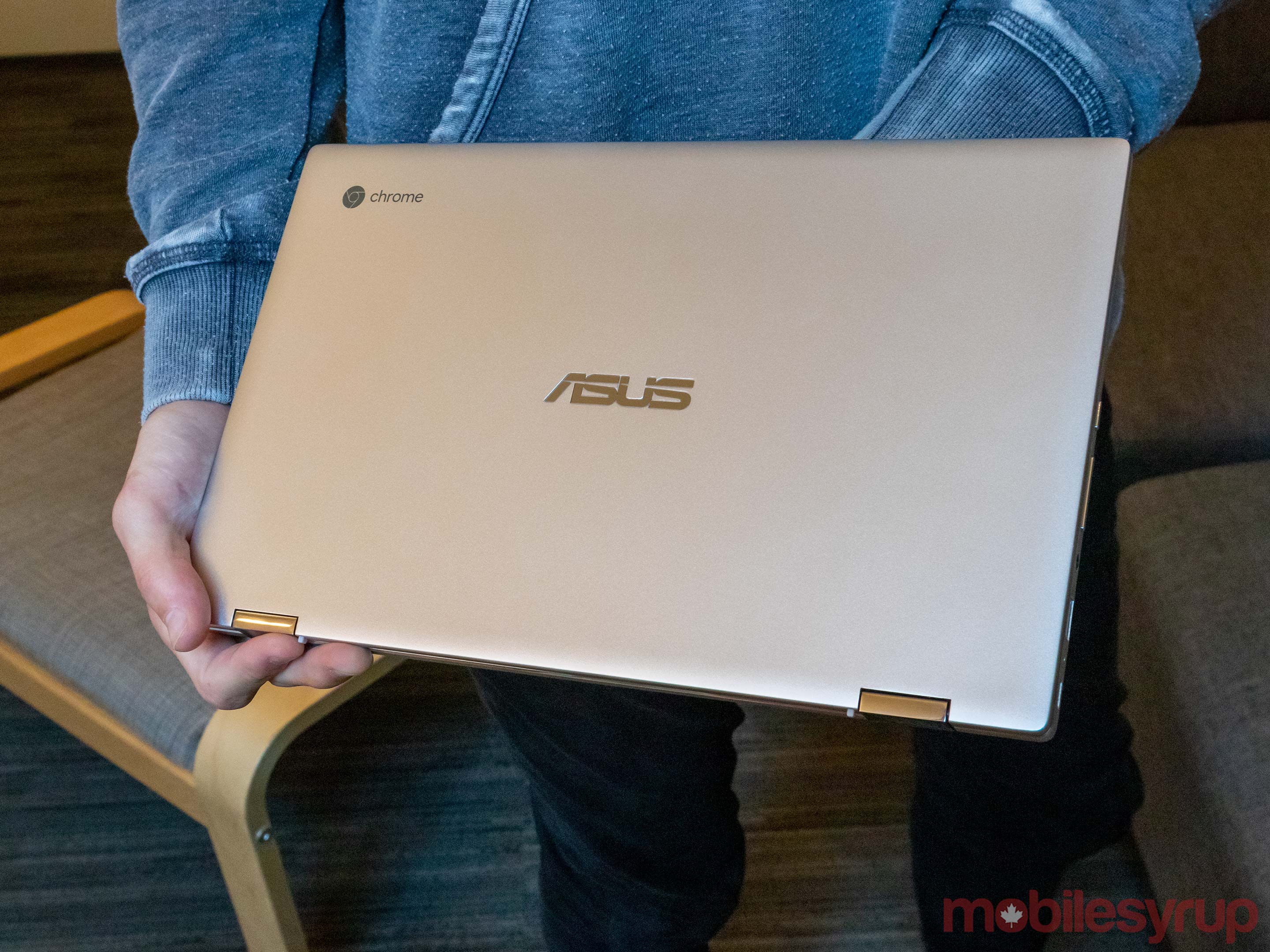
The Asus Chromebook Flip C434TA has a few issues, but overall, it’s incredibly solid Chromebooks have come a long way in both form and function since their inception in 2011, and the Asus Chromebook Flip C434TA is evidence that laptops don’t have to cost an arm and a leg to meet regular consumers’ needs. While...
The post Asus Chromebook Flip C434TA Review: Almost the dream Chrome machine appeared first on MobileSyrup.

The Asus Chromebook Flip C434TA has a few issues, but overall, it’s incredibly solid
Chromebooks have come a long way in both form and function since their inception in 2011, and the Asus Chromebook Flip C434TA is evidence that laptops don’t have to cost an arm and a leg to meet regular consumers’ needs.
While the Flip isn’t perfect for everyone, I could see it checking the right boxes for most people when they’re looking for a new computer.
For instance, the typing experience is second to none, and the large 14-inch screen — which gives the notebook a fantastic 87 percent screen to body ratio — is super immersive.
If you’re tired of using a Mac or Windows computer and you’re looking for a simple machine to do some word processing and internet browsing, it doesn’t get much better than this.

Hardware is the Chromebook Flip’s most becoming aspect. It features a silver metal design that feels both premium and sturdy.
The Flip’s keyboard is a dream. It brings me back to my first MacBook Air from 2016, which famously featured one of the best keyboard experiences around. Each key has a perfect amount of travel and click, while also being relatively quiet compared to the loud clacking of many other keyboards. The key travel is specifically 1.4mm. The laptop also uses a unique hinge design to push the keyboard toward the user at a slight angle, which makes typing more comfortable.
One downside with the Flip is that the keyboard’s backlighting could be better. That said, it still works, but too much light leaks out from in between the keys for my liking.
The Flip’s trackpad is another downside. I got used to it after a few days, but it falls short of the trackpad featured in Apple’s laptops. For example, I often found that hitting smaller targets resulted in me clicking on the wrong thing. Still, I was able to use it, and I found increasing the cursor’s speed in the settings helped it feel more responsive.
The final important aspect is the screen. It isn’t bad by any means, but it’s not high-end either. Its colour reproduction is stable, but there’s no way to calibrate it.
Where the screen excels is its large form factor and tiny bezels. Asus has managed to fit a substantial 14-inch display into the chassis of a 13-inch laptop. This means when you pry open the Chromebook’s lid, you’re greeted with an expansive panel that stretches to each edge. I found myself even using apps in full-screen mode to hide the Google search bar on the Flip since the screen real estate and tiny bezels were so nice.

Display: 14-inch Full HD 1920 x 1080 pixel resolution 16:9 display with NanoEdge design, 178-degee wide-view technology
Processor: 8th Gen Intel Core m3-8100Y (1.1 GHz, 3.4 GHz Turbo Boost)
Memory: 4GB or 8GB RAM (LPDDR3)
Storage: 64GB eMMC
Dimensions: 32.1cm wide, 20.2cm deep, 1.57cm tall (when closed)
Weight: 3.19lbs (1.45 kg)
Camera: HD camera
Operating System: ChromeOS
Battery: Up to 10 hours (48Wh battery)
Connectivity: Wi-Fi 802.11 AC, Bluetooth 4.0
Sensors: n/a
Ports: 2x USB-C Gen 1, 1x USB-A 3.1, 1x 3.5mm headphone/microphone jack, MicroSD card slot
Graphics: Intel UHD Graphics 615
The Flip doesn’t pack the greatest array of internal hardware. However, it gets the job done. While sometimes, I felt like I had too many tabs open and the computer was slowing down, I could usually have at least nine open, if not more without issue.
The other major caveat is that you can only buy the computer with 64GB of storage. I also noticed that it only presented me with about 49GB as usable storage.
Frankly, if you’re planning on using the Flip as your main computer, you’re going to have to be ready to commit to the cloud. You can download things for offline use, but you’ll likely need to back them up to the cloud and wipe them from your hard drive whenever you’re back online.
It’s also worth noting that Asus rates the device’s battery for 10 hours, although I was only able to get about half of that with my usage.

The final aspect of the Flip that I need to address is ChromeOS. I have very mixed feelings about the operating system. On the one hand, I love the simplicity of it, but on the other, I wish it could do more.
I think that it can do enough for most people. I’ll quantify this by stating that in my mind, the average user needs a computer to write the odd document using Google’s online tools like Sheets, Photos, Gmail and also browse the web.
If what you need a computer for falls into these categories, then a Chromebook is right for you. If you need to do things like resource-intensive photo editing with Photoshop or Lightroom, or other creative tasks, then Google’s lightweight operating system falls short.
Something to love about it is its ability to run Android apps, which work moderately well and is a handy feature.
It also functions more like a tablet with an app drawer, which makes finding and organizing your apps easy.
ChromeOS also gets smaller system updates often, which is nice since it brings new features to the operating system. For example, since I’ve started using the Flip it’s been updated to include a new multi-virtual-desktop functionality so you can have more than one digital workspace at a time, and Google Assistant support.
Overall, you need to take stock of what you want from a computer before you dive into the world of ChromeOS. Personally, I think it’s great, but there are some issues like those mentioned above that hold it back from working for you.

The post Asus Chromebook Flip C434TA Review: Almost the dream Chrome machine appeared first on MobileSyrup.
14/10/2019 06:03 PM
14/10/2019 09:30 PM
14/10/2019 04:53 PM
14/10/2019 04:04 PM
14/10/2019 08:36 PM
14/10/2019 02:22 PM
14/10/2019 11:52 AM
14/10/2019 03:21 PM
2014 © Canadian apps and news